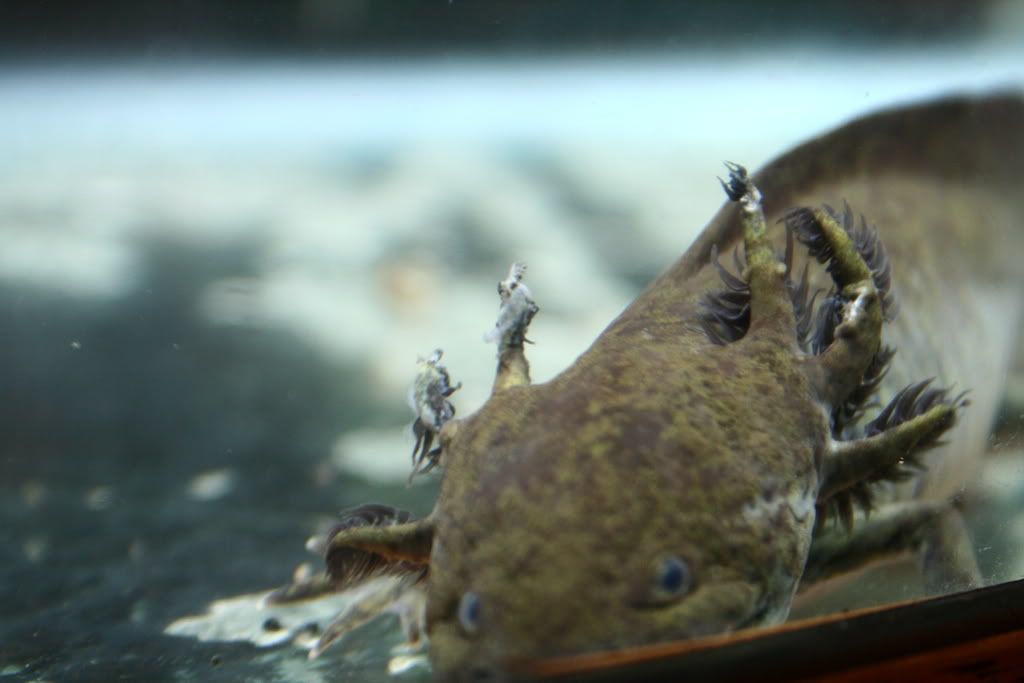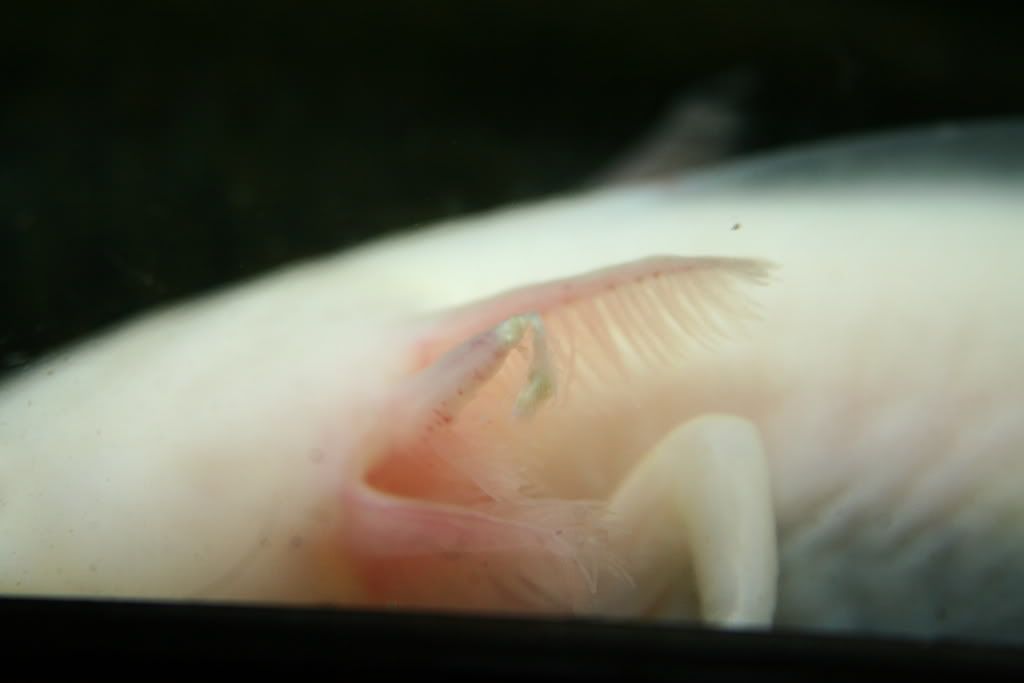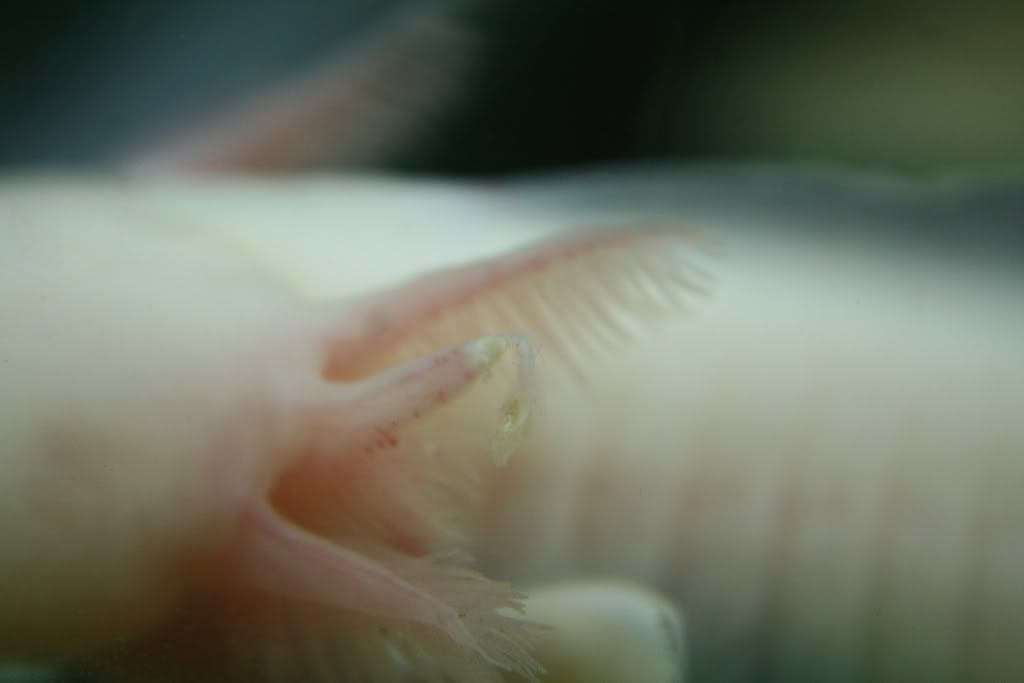bleedingsarcasm
New member
- Joined
- May 29, 2007
- Messages
- 22
- Reaction score
- 0
- Points
- 0
- Age
- 40
- Country
- United States
Ill get a picture of this tomorrow hopefully.
So, we recently moved, and I temporarily put our axies into a 20 gallon fish tank [they were in a 40 before] The tank was holding dirt, and was being used as a snake enclosure, but I was sure to wash/scrub it well, and then I rinsed the heck out of it, so there was no residue of anything.
Well, I transfered some of the water from the old tank, as well as the rocks and plants, to help the tank cycle more quickly.
I filled the tank with fresh, dechlorinated and dechloramined water from our filter, yet, it looked very.. cloudy/gross. I have a canister filter on the tank, rated up to 80 gallons, and I was noticing that the fish and axies were surfacing for air, so I added an older backpack filter a couple days later.
The water finally started clearing up, and the axolotls ate all of their gold fish, so I went to petco to pick up some more.
Well, that night, I noticed fish started dying at an alarming rate, including my baby koi that I kept in with them, and my cory cat that could have survived a nuclear bomb.
The ends of my axies gills started looking stringy/chewed, but they never nibble on each other, and they are right next to my bed and desk, so I watch them for a large portion of the day. [I work from home]
So, out of desperation, and since all of my fish were dead anyway, I went and completely emptied the tank, took out the rocks and plants to be scrubbed, and started filling it from almost scratch [there were like 2" left]
Before dumping the water, I filled all the tubes in my water test kit, to see what was going on. Ironicly, with all the nasty **** I saw floating around in it days prior, ammonia was 0ppm, nitrate was 0ppm, nitrite was 0ppm and my PH was 6.4.
So, I am left to assume that it was some petco spawned flesh eating virus [I am probably totally exaggerating]
So, Any ideas on what it could have been? Like I said, Ill try to get pictures tomorrow. It is probably also time for a medium change in my filters, as well as time for a nice good cleaning of the tubes. [any suggestions on doing that?]
I am really sad my koi died That sucked.
That sucked.
So, we recently moved, and I temporarily put our axies into a 20 gallon fish tank [they were in a 40 before] The tank was holding dirt, and was being used as a snake enclosure, but I was sure to wash/scrub it well, and then I rinsed the heck out of it, so there was no residue of anything.
Well, I transfered some of the water from the old tank, as well as the rocks and plants, to help the tank cycle more quickly.
I filled the tank with fresh, dechlorinated and dechloramined water from our filter, yet, it looked very.. cloudy/gross. I have a canister filter on the tank, rated up to 80 gallons, and I was noticing that the fish and axies were surfacing for air, so I added an older backpack filter a couple days later.
The water finally started clearing up, and the axolotls ate all of their gold fish, so I went to petco to pick up some more.
Well, that night, I noticed fish started dying at an alarming rate, including my baby koi that I kept in with them, and my cory cat that could have survived a nuclear bomb.
The ends of my axies gills started looking stringy/chewed, but they never nibble on each other, and they are right next to my bed and desk, so I watch them for a large portion of the day. [I work from home]
So, out of desperation, and since all of my fish were dead anyway, I went and completely emptied the tank, took out the rocks and plants to be scrubbed, and started filling it from almost scratch [there were like 2" left]
Before dumping the water, I filled all the tubes in my water test kit, to see what was going on. Ironicly, with all the nasty **** I saw floating around in it days prior, ammonia was 0ppm, nitrate was 0ppm, nitrite was 0ppm and my PH was 6.4.
So, I am left to assume that it was some petco spawned flesh eating virus [I am probably totally exaggerating]
So, Any ideas on what it could have been? Like I said, Ill try to get pictures tomorrow. It is probably also time for a medium change in my filters, as well as time for a nice good cleaning of the tubes. [any suggestions on doing that?]
I am really sad my koi died










